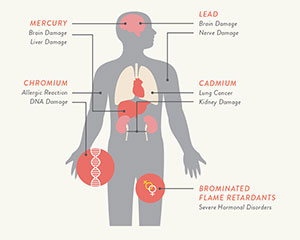[INFOGRAPHIC] E-waste- The World Drowning in Cables and Devices

The era of modern technology is increasing the amount of e-waste, because the useful lifespan of the electronic devices and gadgets is decreasing. Consumers keep on looking for “the next best thing” and their demands are being fulfilled by the electronic device companies as they are providing them with updated and improved devices and gadgets rapidly. The issue of the heaping electronic waste is of major concern.
According to the below mentioned info-graphic, the estimated life span of the most used and rapidly replaced electronics are as under:
Mobile Phones- 18 Months
Computers- 2-3 years
Printers- 5 years
Televisions-10 years
The electronic waste is generated by different countries at different rate in millions of tons. These countries throw away all the e-junk instead of reusing them or recycling them. The world produces around 54 million tons of electronic waste which makes an average of 43lbs. By 2017, all the e-waste generated will weigh around 72 million tons which will be equivalent to the weight of 200 Empire State buildings.
As far as the impact of the electronic waste on human health is concerned, many chemicals and materials that are released from these electronics are not healthy for us. If human health is made vulnerable to any toxic waste, it will cause havoc inside our bodies.
Electronic waste is dumped in the developing nations like India, Nigeria and China or is being exported to these countries by the developed nations. The labors and the workers working in these developing countries work with the electronic waste and dismantle electronics exposing themselves to hazards and risking their lives daily.
Embed in your site:
About The Author Kelly Sampson
Kelly Sampson is a writer, blogger, and environmental enthusiast. She has strong opinions about climate change, the dogs vs. cats debate, and Oxford commas. She has lent Hummingbird International her engaging and spirited voice and turned our blog into a great place to find valuable information about e-waste, e-waste recycling, and the ITAD industry. Explore our blog to read more of her work.







